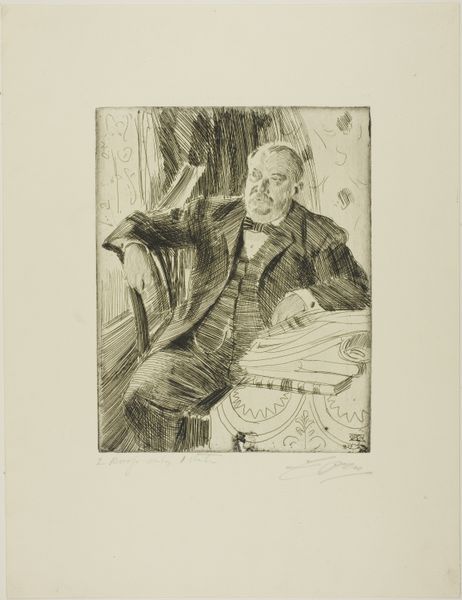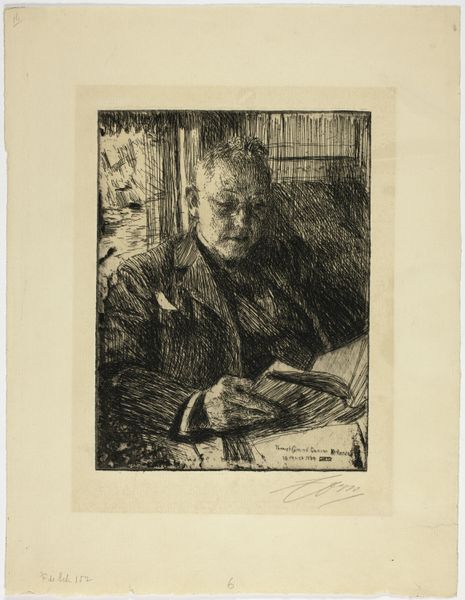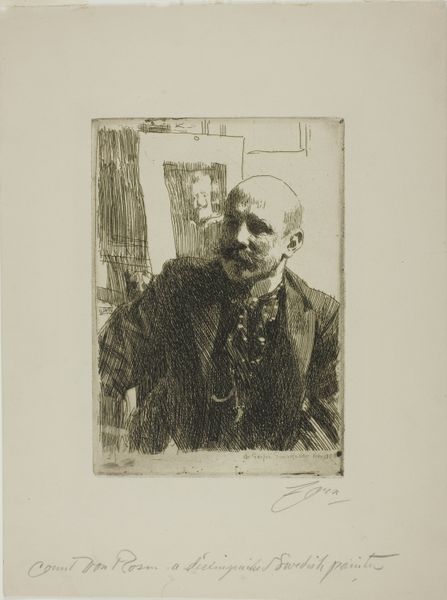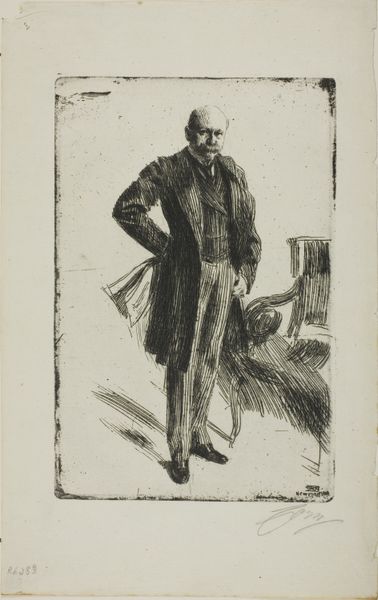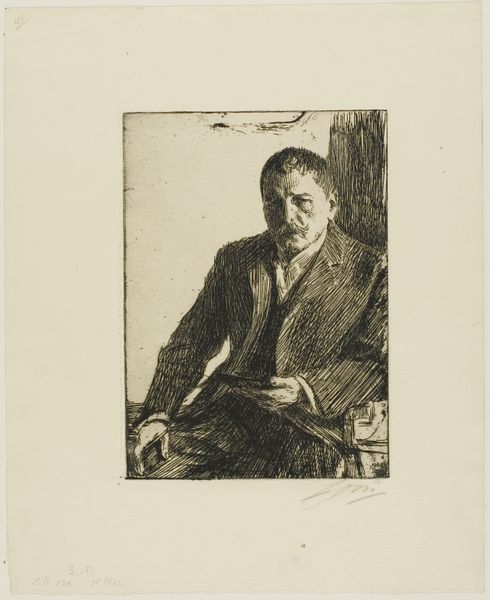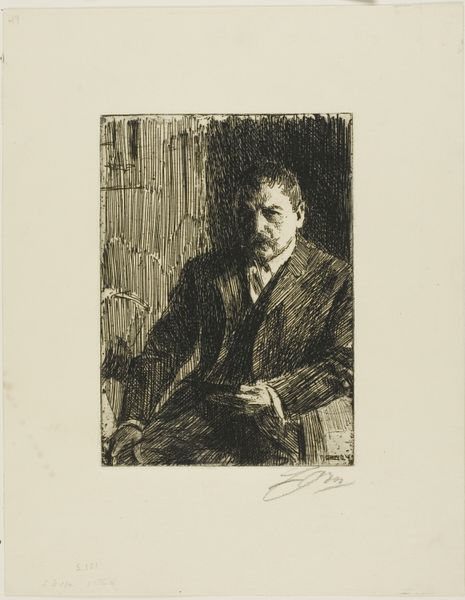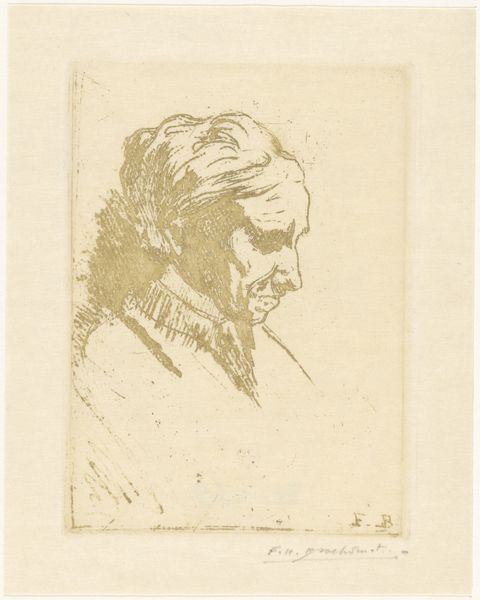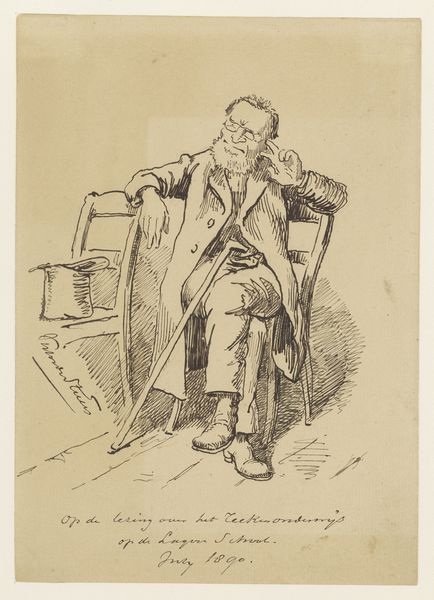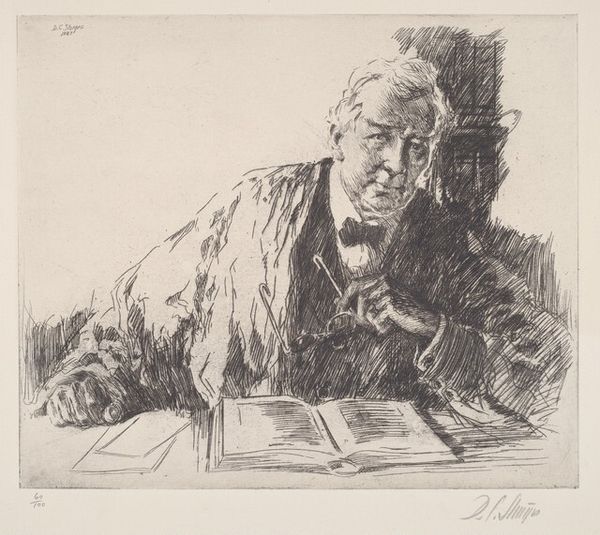
drawing, print, etching, paper, engraving
#
portrait
#
drawing
#
negative space
# print
#
etching
#
paper
#
engraving
#
realism
Dimensions: 227 × 177 mm (image/plate); 392 × 277 mm (sheet)
Copyright: Public Domain
Anders Zorn made this print of Grover Cleveland II using etching, a printmaking technique that has roots in the decorative arts. Zorn has masterfully used the etched line to create a sense of form and depth, giving the image a painterly quality, even though it is printed. Etching involves coating a metal plate with a waxy, acid-resistant substance called a ground, then drawing through the ground with a sharp needle to expose the metal. The plate is then immersed in acid, which bites into the exposed lines. The longer the plate remains in the acid, the deeper the lines become, allowing for variations in tone. To make a print, the plate is inked, and then wiped clean, leaving ink only in the etched lines. The plate is then pressed onto a sheet of paper, transferring the image. Etching was often used for mass production of images, democratizing art and making it more accessible to a wider audience. Thinking about the way Zorn combined craft and fine art reminds us that creativity isn't just about the image, but also the labor and industrial processes that bring an artwork into being.
Comments
No comments
Be the first to comment and join the conversation on the ultimate creative platform.
